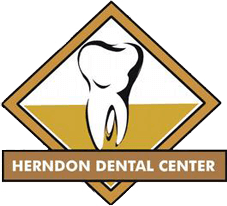Pediatrics - Mouth Piercings and Jewelry
Introduction
Mouth piercings and jewelry are a type of fashion trend among some young adults and teenagers. The lips, tongue, and cheeks may be pierced to wear barbell, hoop, or stud type jewelry, similar to earrings. Oral piercing procedures and the jewelry can cause health risks and dental complications.
Your child’s mouth contains both good and harmful bacteria. Infections can occur at the site of your child’s piercing. Certain blood borne diseases can be transmitted through your child’s piercing site. Such diseases may be dangerous and life threatening including HIV, hepatitis B, C, D, and G, which affects the liver, and endocarditis, that targets the heart. Blood-borne diseases may be transmitted by several situations, including the use of contaminated piercing equipment. Blood-borne viruses are also transmitted from an infected person to a non-infected person in blood or body fluids that contain blood, such as semen and saliva.
Oral piercing procedures can cause blood clots, prolonged bleeding, and nerve damage. Tissue swelling may also result. In some cases, tissue swelling may be so severe that it blocks a person’s ability to breathe. Your child should receive immediate medical attention for blood clots, prolonged bleeding, nerve damage, and swelling.
Mouth jewelry can injure your child’s gums and teeth. Your child’s gums may be injured or recede (move away form your teeth) if they are in constant contact with the jewelry. This can contribute to tooth and gum decay. Additionally, the jewelry can cause cracked teeth and damage fillings, crowns, and orthodontics.
Symptoms
If your child wears mouth jewelry, be aware of the signs of infection including redness, swelling, and pain. Gum tissues may appear inflamed and pull away from your child’s teeth. Mouth jewelry can cause your child’s teeth to crack. It may also damage your child’s fillings, crowns, or braces.
Diagnosis
Your dentist will examine your child’s piercing site, teeth, and gums. Your child will need to remove his or her piercing to enable your dentist to take the best X-rays possible. The X-rays will identify changes in your child’s teeth, gums, and bones.
Treatment
Treatment for piercing-related injury and infection depends on the type of injury or infection your child experiences and the extent of your child’s condition. Your dentist or doctor may prescribe antibiotics to treat infections. Some infections transmitted by in blood, such as HIV and some forms of hepatitis, do not have a cure, but still benefit from treatment.
Your dentist can treat gum disease with prescription mouth rinses, medications, and in some cases, surgery. Untreated gum disease can lead to tooth loss. Your dentist can also treat cracked teeth. Treatments for cracked teeth include fillings, root canal therapy, and crowns. Untreated crack teeth can accelerate tooth decay and lead to cavities and tooth loss.
The only way to avoid complications from mouth piercing and jewelry is to not get them or to stop wearing them. If your child chooses to have mouth piercing, make an informed decision. Be aware of the risks, symptoms, and serious problems associated with mouth piercing and jewelry. Avoid “home” piercing methods. Ask questions to find out about the health and sterilization practices of a facility or provider. Your child should be cautious of his or her lifestyle choices following piercing.

Copyright © - iHealthSpot Interactive - www.iHealthSpot.com
This information is intended for educational and informational purposes only. It should not be used in place of an individual consultation or examination or replace the advice of your health care professional and should not be relied upon to determine diagnosis or course of treatment.
The iHealthSpot patient education library was written collaboratively by the iHealthSpot editorial team which includes Senior Medical Authors Dr. Mary Car-Blanchard, OTD/OTR/L and Valerie K. Clark, and the following editorial advisors: Steve Meadows, MD, Ernie F. Soto, DDS, Ronald J. Glatzer, MD, Jonathan Rosenberg, MD, Christopher M. Nolte, MD, David Applebaum, MD, Jonathan M. Tarrash, MD, and Paula Soto, RN/BSN. This content complies with the HONcode standard for trustworthy health information. The library commenced development on September 1, 2005 with the latest update/addition on February 16, 2022. For information on iHealthSpot’s other services including medical website design, visit www.iHealthSpot.com.

